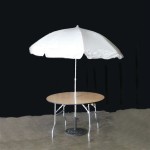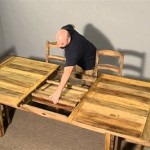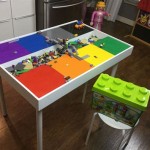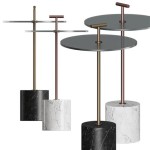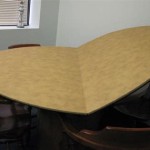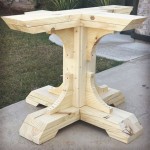Essential Aspects of Vintage Extendable Dining Tables
Vintage extendable dining tables exude charm and versatility, making them a cherished addition to any home. These timeless pieces seamlessly adapt to accommodate various dining needs, offering both functionality and aesthetic appeal. Delving into the world of vintage extendable dining tables unveils an array of factors to consider when selecting the perfect one for your space.
Craftsmanship and Design
Vintage extendable dining tables often showcase intricate craftsmanship and unique design elements. From hand-carved details to elegant curves, these tables possess a character that modern mass-produced pieces lack. Examine the table's construction, paying attention to the quality of the joinery and the materials used. Solid wood species such as oak, mahogany, and walnut ensure durability and longevity.
Functionality and Extensions
The primary purpose of an extendable dining table is its ability to accommodate different seating capacities. Determine the minimum and maximum lengths the table can extend to ensure it meets your dining needs. Various extension mechanisms exist, including slide-on, pull-out, and butterfly leaves. Consider the ease of use and stability of the extension system.
Style and Finish
Vintage extendable dining tables encompass a range of styles, from ornate Victorian to sleek Mid-Century Modern. Choose a style that complements your existing decor or creates a desired ambiance. The table's finish plays a crucial role in aesthetics and durability. Lacquered, oiled, or hand-rubbed finishes enhance the wood's natural beauty and protect it from damage.
Condition and Restoration
Vintage furniture naturally bears traces of its past use. While some blemishes add character, assess the overall condition of the table. Check for structural damage, loose joints, or major stains. If necessary, consider restoration to restore the table to its former glory. Professional refinishing can revive the table's finish and extend its lifespan.
Space and Scale
Before investing in a vintage extendable dining table, carefully consider its placement and scale in your dining area. Measure the available space and ensure the table has enough room to extend fully without hindering movement. Proportionality is key to creating a harmonious dining environment. Choose a table that complements the size and style of your room.

Vintage Extendable Formica Dining Table

Vintage Extendable Teak Danish Dining Table By Ole Hald 1960 S

Danish Vintage Extendable Teak Dining Table 1960s

Vintage Extendable Dining Table 1960s Chairish

Vintage Extendable Dining Table 1940s For At Pamono

Vintage Extendable Dining Table 1960s For At Pamono

Vintage Extendable Dining Table In Ash Wood For Mier Czechoslovakia 1960

Vintage Extendable Dining Table With Drop Down Leafs One Extra Leaf By Paul Mccobb Chairish

Vintage Baker Extendable Solid Wood Dining Table And Chairs Set 6

Vintage Extendable Dining Table In Teak For At Pamono

